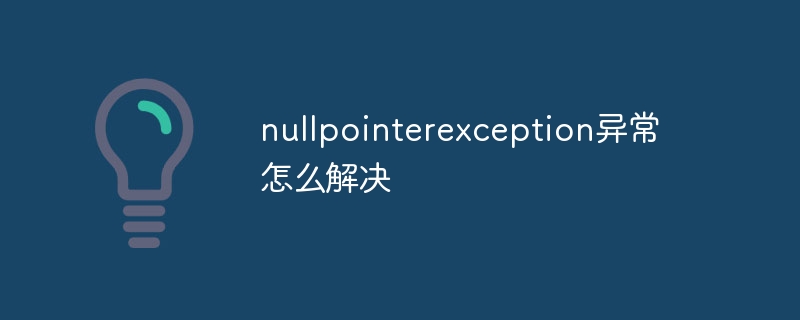nullpointerexception exceptions can be solved by checking for null references, initializing objects correctly, using default values, using exception handling mechanisms and debugging code. Detailed introduction: 1. Check the null reference, use if statement or ternary operator to check whether the object is null; 2. Initialize the object, use the constructor or initialization block to initialize the object; 3. Use the default value, you can set a Default value; 4. Exception handling, etc.

NullPointerException is one of the most common exceptions in the Java programming language. It usually occurs in a program when trying to access the properties of a null object or call a method of a null object. This exception will be thrown. In this article, we will explore the causes of NullPointerException and how to resolve it.
First, let us understand the cause of NullPointerException. When we create an object and assign it a value of null, if we try to access the properties of this object or call its methods, a NullPointerException will be thrown. This is because null represents an empty object, which does not have any properties or methods to access.
So, how to solve the NullPointerException exception? Here are some common solutions:
1. Check the null reference: Before accessing the object's properties or calling the object's method, you should first check the object Whether it is empty. You can use if statement or ternary operator to check if an object is null. For example:
if (object != null) {
// 访问对象的属性或调用对象的方法
}2. Initializing objects: When creating objects, you should ensure that the objects are initialized correctly. If the object is not initialized correctly, a NullPointerException will be thrown. Objects can be initialized using constructors or initialization blocks. For example:
public class MyClass {
private String name;
public MyClass() {
this.name = "default";
}
// 其他代码
}3. Use default value: If an object may be empty and has not been initialized before using it, you can set a default value for the object. In this way, even if the object is empty, NullPointerException will not be thrown. For example:
public class MyClass {
private String name = "";
// 其他代码
}4. Exception handling: If the occurrence of NullPointerException cannot be avoided, you can use the exception handling mechanism to catch and handle the exception. You can use the try-catch statement to catch the NullPointerException exception and handle the exception in the catch block. For example:
try {
// 可能抛出NullPointerException异常的代码
} catch (NullPointerException e) {
// 处理NullPointerException异常
}5. Debugging your code: If you cannot determine the cause of the NullPointerException, you can use debugging tools to examine your code. Debugging tools can help us identify problems in our code and provide solutions.
To sum up, NullPointerException is one of the common exceptions in Java programming. In order to avoid NullPointerException exceptions, we should check for null references, initialize objects correctly, use default values, use exception handling mechanisms and debug code. By taking these measures, we can better handle NullPointerException exceptions and improve the stability and reliability of the program .
The above is the detailed content of How to solve nullpointerexception exception. For more information, please follow other related articles on the PHP Chinese website!